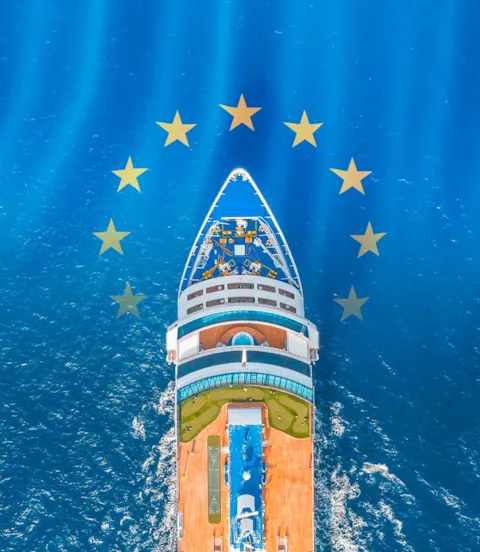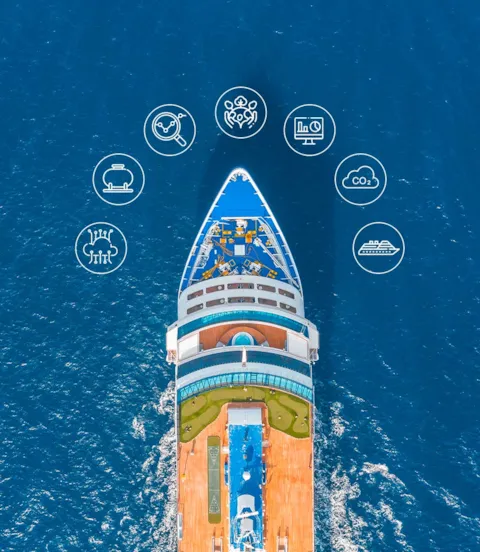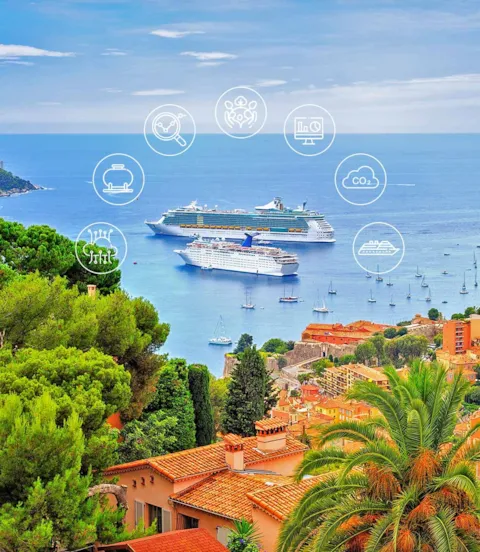Managing financial risk of EU ETS in the cruise industry
Cruise lines operating in Europe must prepare for the implementation of the EU’s Emissions Trading System (EU ETS) for shipping by putting in place robust business procedures for emissions accounting and the purchase of carbon allowances to manage the financial risk.

EU ETS impacts profits
“The most significant impact for cruise companies will be on the bottom line. This could affect profitability at a time when the cruise market is returning after the dramatic slowdown in activity caused by the coronavirus pandemic,” he says, adding that higher costs could be passed on to passengers in higher ticket prices or reduced discounts.
Cruise lines operating ships above 5,000 gross tonnes will be required to surrender European Union Allowances (EUAs) based on their annual emissions reported under the EU’s MRV regime.
Under a proposal set to be ratified by the EU later this year, these companies would initially be liable for 40% of their CO2 emissions in 2024, rising to 70% in 2025 and 100% in 2026, when two other greenhouse gases emitted by ships – methane and nitrous oxide – will also be included in the EU ETS.

Changes to cruise itineraries
Once fully implemented, 100% of emissions on voyages and port calls within the EU/EEA, and 50% of emissions on voyages into or out of the EU/EEA, would be subject to the EU ETS.
DNV’s Director Environment Maritime Eirik Nyhus expects changes to cruise itineraries in Europe, with perhaps fewer destinations and reduced sailing distances to lower fuel consumption, mirroring the current industry trend towards low-mileage cruising in response to high fuel prices triggered by the war in Ukraine.
He points out that long-haul cruises such as those crossing the Atlantic from the Caribbean to Europe could include intermediate stops at nearby ports like Southampton in the UK or Casablanca in Morocco to reduce emissions reporting exposure, given that the EU ETS will cover emissions from the last port of call with passenger movement before entering European waters.

Incentive for more energy efficiency
“The EU ETS intends to serve as an economic incentive to spur further investments in energy-efficiency technologies and, if the carbon price goes high enough, to increase the uptake of alternative fuels,” Nyhus says.
The cruise industry has already made heavy investments in green technologies and operational efficiencies to achieve significant fuel savings in line with its goal of net-zero emissions by 2050, which is aligned with the EU’s target for climate neutrality that the ETS is geared towards.

Numbers show an uptake of efficiency measures on cruise vessels
Cruise Lines International Association, which represents all major cruise companies and has a member fleet of 272 vessels, states in its latest market outlook that, by 2027, its member fleet will include 26 LNG-powered cruise ships, or 16% of global capacity; 174 ships with shore power connectivity, or 66% of global capacity; and 176 ships with exhaust gas cleaning systems installed.
Furthermore, the association has stated that more than 15% of new cruise ships to be launched over the next five years will be equipped to incorporate fuel cells or batteries.

Need for emissions accounting to control costs
Hermundsgård says: “Energy efficiency has been a major driver for the industry over the past decade. But this means there are few additional technical measures available as a quick fix to cut emissions further.”
Consequently, he believes the onus is now on cruise operators to put managerial and administrative systems in place so they can work effectively to reduce their financial exposure under the new EU ETS regime.

DNV’s new Emissions Connect tool provides real-time verified emissions data
“There are three key priorities for cruise companies to ensure compliance – having efficient emissions accounting to gain real-time control of emissions, determining how to acquire EUAs at the lowest possible price, and making renewed efforts in energy efficiency,” Hermundsgård says.
A trusted source of verified emissions data is a prerequisite for emissions accounting, and this is provided by DNV’s new Emissions Connect tool. Available via the Veracity platform, it allows real-time quality checking and verification of streamed emissions data to aid compliance.

Managing risk with EUA acquisition
Cruise companies will start building up liabilities for emissions from the beginning of 2024 and these will need to be quantified using accurate data to be included in quarterly and annual financial reports for investors, Nyhus explains.
“At the same time, companies must determine how to acquire EUAs, which will be another commodity to be included in their trading portfolios for the management of risk,” he says.
“They may decide to acquire allowances on the spot market when bunkering if they are risk-averse, or alternatively hedge against higher carbon prices by acquiring them through a broker or bank with trading experience in the carbon market. This will depend on the risk appetite of each company.”
As well as supporting cruise companies with advisory services in relation to the EU ETS, DNV is advising them on a decarbonization pathway covering the use of alternative fuels and new technologies for increased energy efficiency.

Capacity squeeze on horizon
Nyhus does not expect a shakedown in the European cruise market due to the EU ETS as companies will be competing on a level playing field with the same carbon price for all.
There has already been some rationalization of the industry with the recycling of around 20 older cruise vessels in recent years due to the earlier slump in demand, while some companies have gone out of business.
Hermundsgård sees possible fleet capacity challenges for the industry going forward as the rate of recycling increases, which could lead to a dearth of vessels and a flattening of the market by 2030 unless new players start building cruise ships.
“Given the looming capacity issue, this makes it all the more important for cruise companies to tackle the cost challenges of the EU ETS to ensure price stability for passengers,” he says.

- Shutterstock – aappp/cgstock
- Shutterstock / Evannovostro
- Shutterstock / aappp
- Shutterstock / Boris Stroujko
- DNV